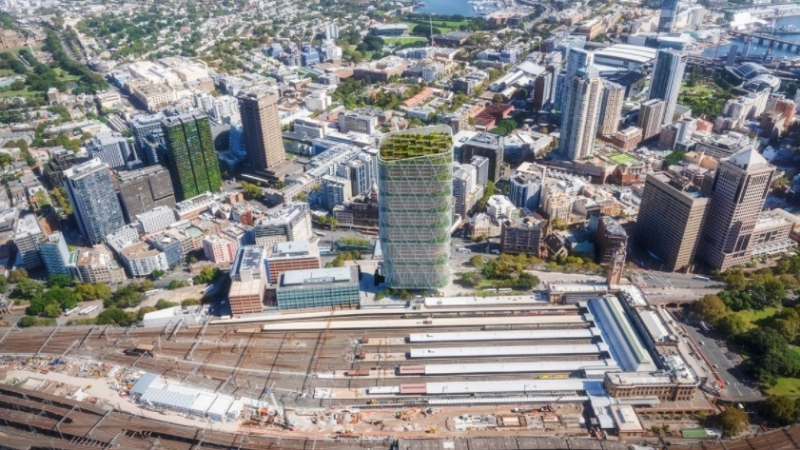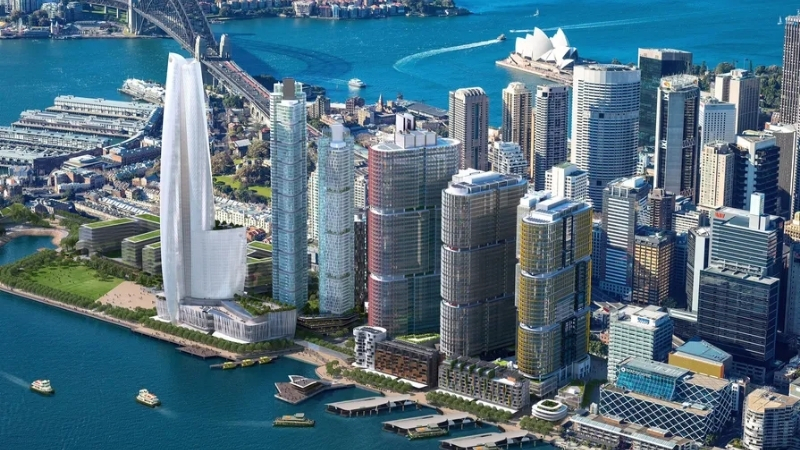Resources
Newsletter
Stay up to date and with the latest news, projects, deals and features.
SubscribeArchitects, developers and engineers are successfully finding ways to drive down carbon emissions in buildings to slow the effects of climate change.
But as buildings start to run more efficiently, focus is now shifting to construction materials.
Governments are considering legislation that will force the real estate sector to meet targets for the amount of carbon ‘embodied’ in new buildings.
Embodied carbon refers to the emissions produced in obtaining, making and transporting building materials, and can be reduced by using recycled materials, as well as designing buildings so they can be disassembled in a way that materials can be reused.
As organisations such as the World Building Council and Architecture 2030 advocate for legislated targets, several buildings are already leading the way.
In Australia, the University of Queensland’s Global Change Institute has become the first building to include in its structure low-carbon cement-free geopolymer precast concrete, significantly reducing its carbon footprint and achieving innovation points from the Green Building Council.
Barangaroo South, in Sydney, has 20 percent less embodied carbon compared to standard construction, according to the developer Lendlease.
Also in Sydney, plans were unveiled earlier this year for the world’s tallest hybrid timber tower, which will serve as the headquarters of technology company Atlassian. The use of mass timber construction methods will substantially reduce the project’s carbon footprint.

With buildings contributing to 40 percent of global carbon dioxide emissions, and 20 percent in Australia, the real estate industry has a significant responsibility to tackle global warming, says Jordan Kirrane, sustainability lead at building engineering group HDR|Hurley Palmer Flatt.
“The bushfires ravaging Australia and the United States, and the scientific evidence that points to climate emergency, calls for industry, policy-makers and communities to respond as collectively as they have with Covid-19 to reduce destructive emissions,” Kirrane says.
A ‘whole-life-carbon assessment’, which refers to the carbon both embodied in a building as well as emitted through building operations, is the most accurate indicator of a building’s green credentials and is measured by Green Star, the Green Building Council of Australia’s sustainability rating system.
In order to maximise the benefits of a whole-life-cycle assessment, carbon goals must be embedded at the start of a development project, Kirrane says.
“Reducing carbon requires a commitment from all building stakeholders to bring the aspiration to life, but engaging a specialist from the start is critical to defining the requirement, mapping out the options, and identifying the actions needed to create a genuinely environmentally-responsive building,” Kirrane says.
Given the principles of low-embodied carbon buildings are to reuse materials and structures wherever possible, and use less generally, there are financial incentives for using a whole-life carbon assessment as a design tool, Kirrane adds.
“Low-embodied carbon strategies can reduce maintenance costs by matching materials to the lifespan of the project, and they can also help in developing buildings that are more adaptable to future alternative uses.”
The focus on modular materials can also speed up construction times, he says.

Architecture 2030, the non-profit organisation dedicated to reducing the energy consumption and greenhouse gas emissions of the built environment, has set a challenge to reduce embodied carbon by 50 percent by 2030, and 100 percent by 2050.
The latter will be achieved when every new building can achieve ‘whole-life-net-zero-carbon’ status.
This means the building achieves operational zero carbon balance, as well as being 100 percent ‘circular’ - that is, materials and products are made of reused materials and the building is designed for disassembly.
Further to that, the construction, transport and disassembly must be carried out with renewable energy.
In the meantime, conducting whole-life-carbon assessments across the sector and focusing on reducing the carbon impact of major building materials such as steel and concrete can contribute to the ultimate goal.
Where it is not possible to achieve whole-life-net-zero-carbon through circular economy means, carbon offsetting can be used.
However, it is important that carbon offsetting is only used as a last resort, Kirrane says.
“We need to take the opportunity now to drive down embodied carbon through design innovation. It’s a challenging goal and in order to achieve this, we need to have a far more advanced circular economy, with a dependency on the construction industry to drive the demand for circular economy materials,” Kirrane says.
The Urban Developer is proud to partner with HDR|Hurley Palmer Flatt to deliver this article to you. In doing so, we can continue to publish our free daily news, information, insights and opinion to you, our valued readers.